What is an Abscess?
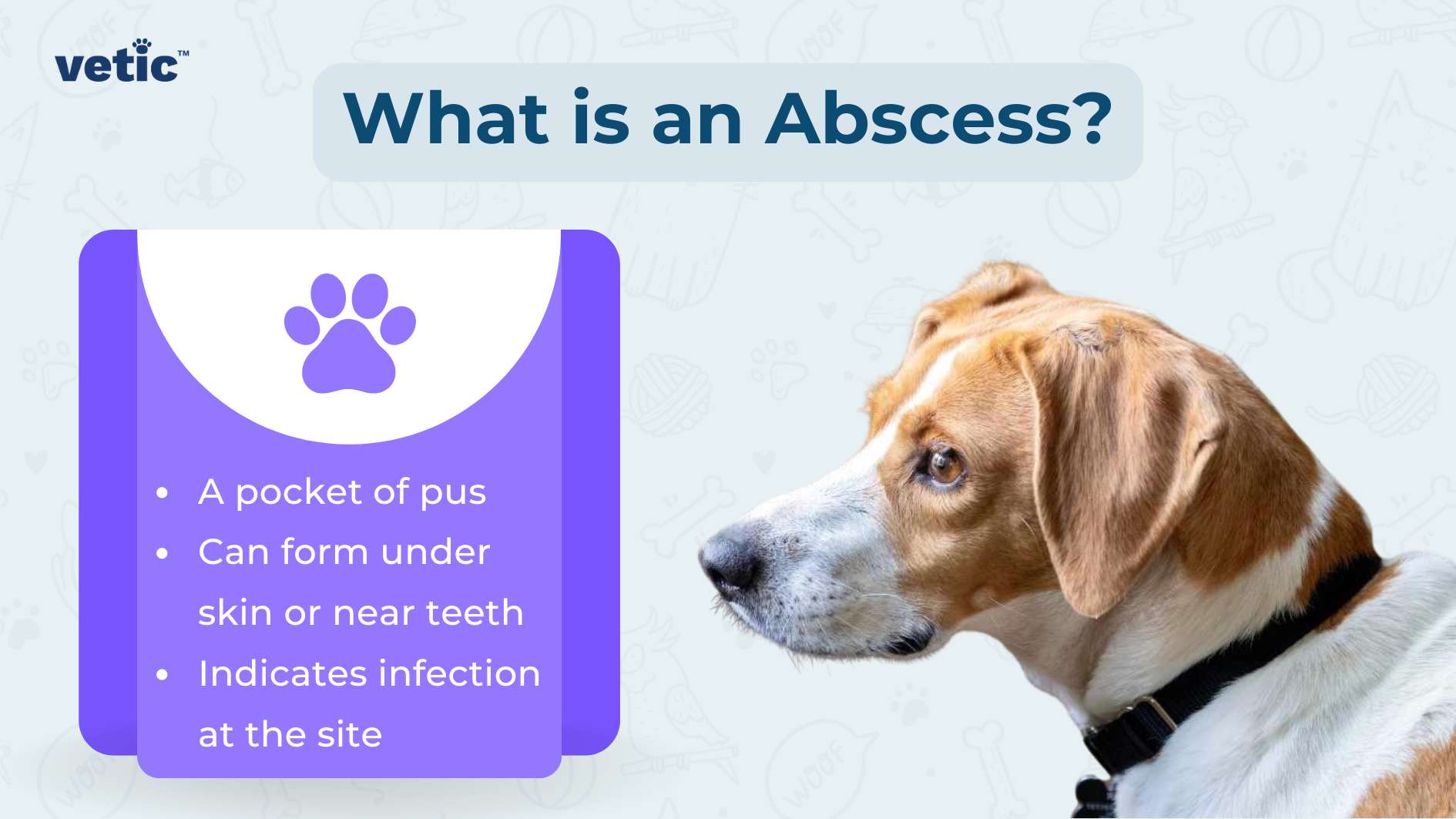
The easiest way to describe an abscess is by calling it a pocket of pus in your dog’s body. This pocket of pus or abscess can occur at any place – the root of a tooth or under the skin.
It generally means, your dog has an infection at that particular location whether it’s from an impacted tooth or a dog bite.
Is an Abscess Painful?
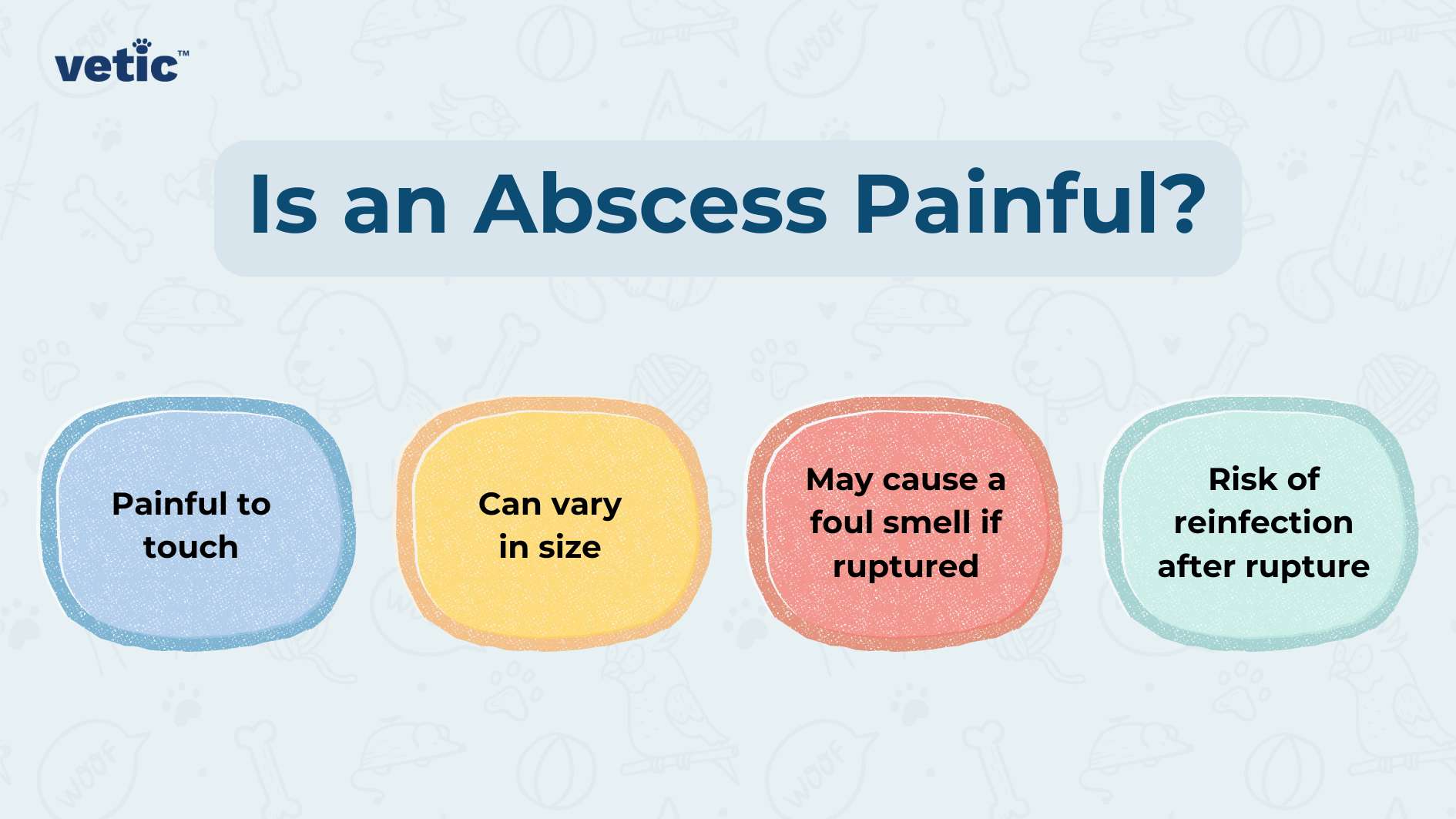
Yes! An abscess in any part of the dog’s body is painful. Not all abscesses are hard and warm, some of them can be soft to the touch (compressible). It can be small like the size of a pea or as large as a potato!
It is more painful when these pus-filled pockets rupture and expel the pus with a foul-smelling fluid. The rupture of an abscess leaves a gaping wound, which has a high chance of becoming infected, again.
Here’s how you can understand if your dog is in pain from an abscess
What Causes Abscesses in Dogs?
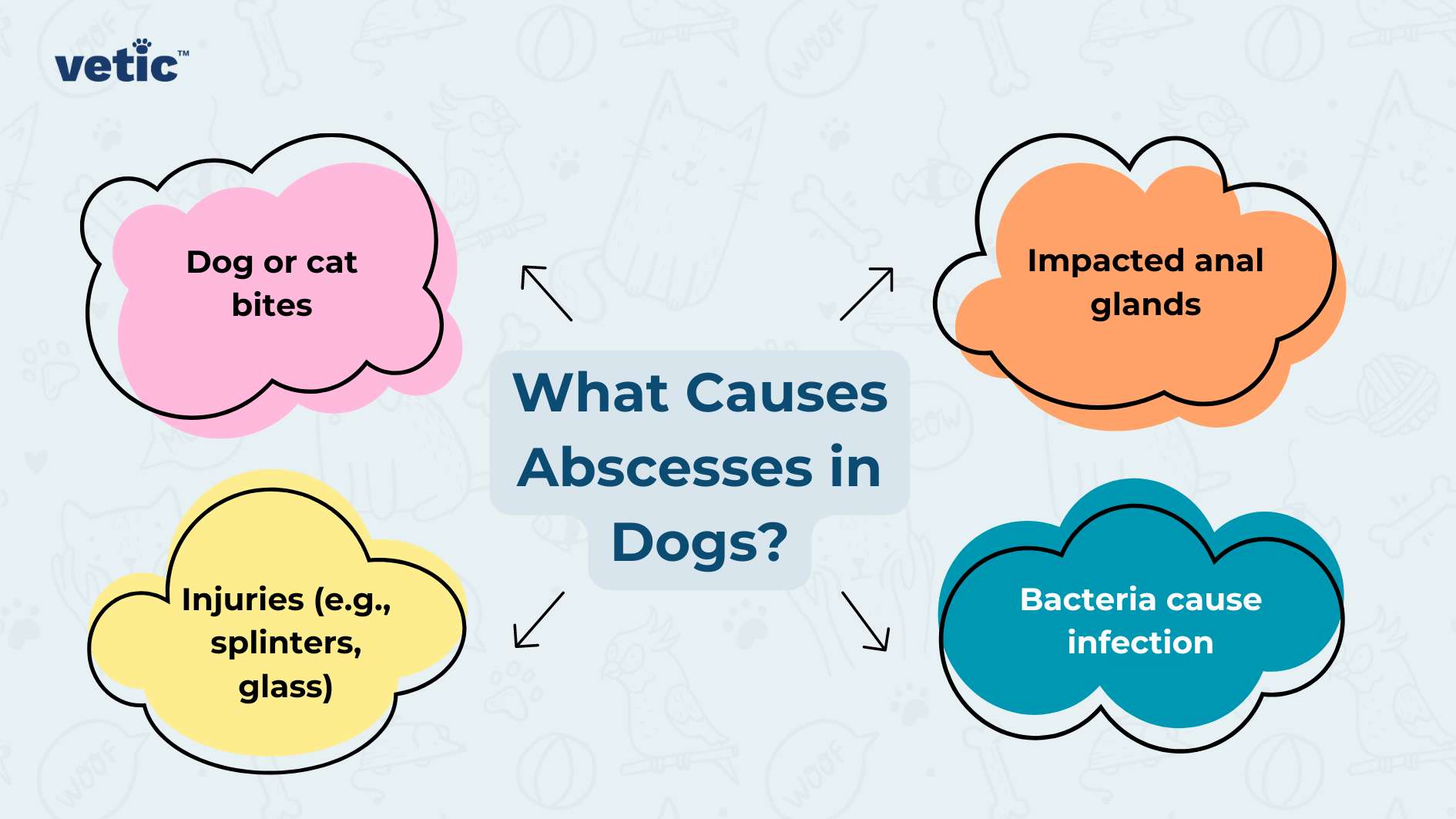
Abscesses in dogs can be caused by multiple factors. One of the most common causes of abscess formation that we have seen at our clinics is a bite from another dog or cat!
Teeth and mouth harbour a lot of bacteria. So a bite introduces them into the dog’s skin and/or muscle. Depending on the site of the bite and how deep the bite is, abscesses can develop easily.
Impaction of the anal gland can also lead to painful anal abscesses in dogs. Unfortunately, we have seen this in many dogs who are either old and have difficulty moving around, or those who don’t get proper anal sac cleaning.
We have also seen abscesses forming from injuries caused by broken glass, splintered wood, and nails.
The good news is, that external abscesses like those right under the skin can be treated easily. Dental abscesses require oral care and that is also available at any of our clinics.
What’s the Treatment for Abscesses in Dogs?
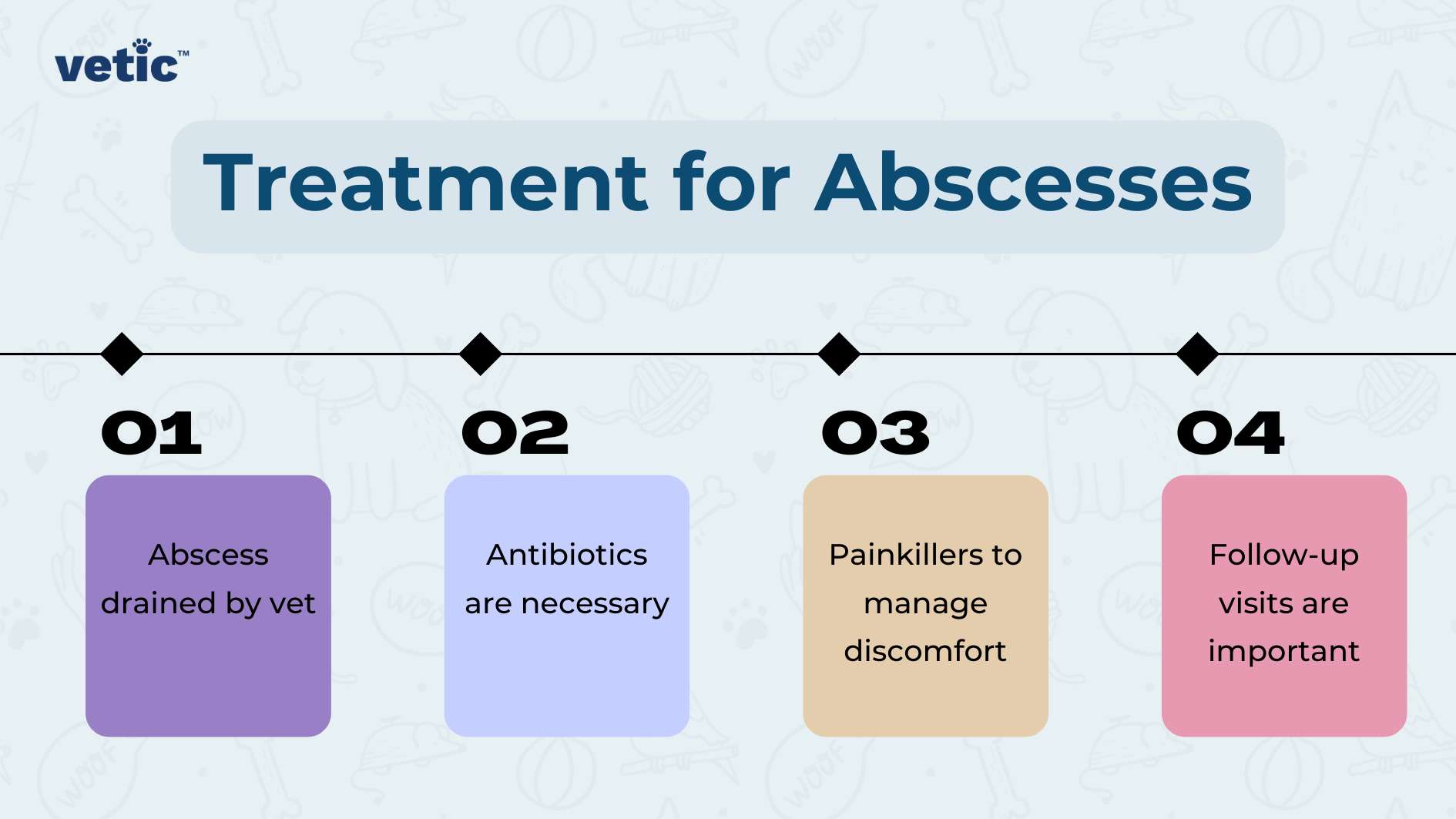
The treatment for abscesses in dogs is a three-pronged approach. –
- Draining the Abscess
- Antibiotics
- Painkillers
Draining the Abscess
We want to minimize the risk of further infections. So, ideally, the abscess is drained at the clinic in the treatment area. If you are going to a clinic because your dog has an abscess, always ensure the place is hygienic and the equipment used is new or sterile.
The abscess should only be drained by an experienced veterinarian since you don’t want additional damage to the area.
Antibiotics
Drying and healing an abscess without antibiotics is nearly impossible. The veterinarian will give you antibiotics depending on the location and nature of the abscess. They may even require an antibiotic sensitivity test from the abscess to see which antibiotic will work the best for your pet.
Always stick to the veterinarian-prescribed antibiotic dose and duration. Some abscesses can be stubborn and take more than a week to heal. Touch base with your veterinarian on your dog’s health and progress every 5-6 days to check how long you have to continue their meds.
Painkillers
Painkillers are necessary at times to uphold or improve your dog’s quality of life. If pain from their abscess or draining is keeping them from moving around or behaving normally, they require at least some painkillers in controlled doses.
Never overmedicate your dog with NSAID pain medication without consulting your vet. If you have reason to believe your dog is still in pain after receiving their daily pain medicine, speak to your vet. Not all medicines work the same way on all dogs.
How Will You Understand If The Swelling on Your Dog’s Body Is an Abscess?
An abscess is painful to the touch. Your dog may prevent you from touching the swelling or yelp if you do. The swelling may be hard or soft, but it’s almost always warm to the touch.
Sometimes, abscesses also cause fever in dogs due to the presence of infection in the location.
How To Take Care of Your Dog After Abscess Draining?
- Monitor any excess oozing pus or fluid from the site of the abscess.
- Keep a record if abscesses that have been in your dog’s past medical history.
- Try to prevent the re-formation of an abscess at the same site (avoid injuries).
- Visit the veterinarian if they request follow-up care.
- Delayed treatment or improper cleaning may lead to the recurrence of the abscess or formation of chronically training abscess tracts.
- Do not stop or prolong their medication without the advice of the veterinarian.
How Can You Prevent Abscess Formation in The Future?
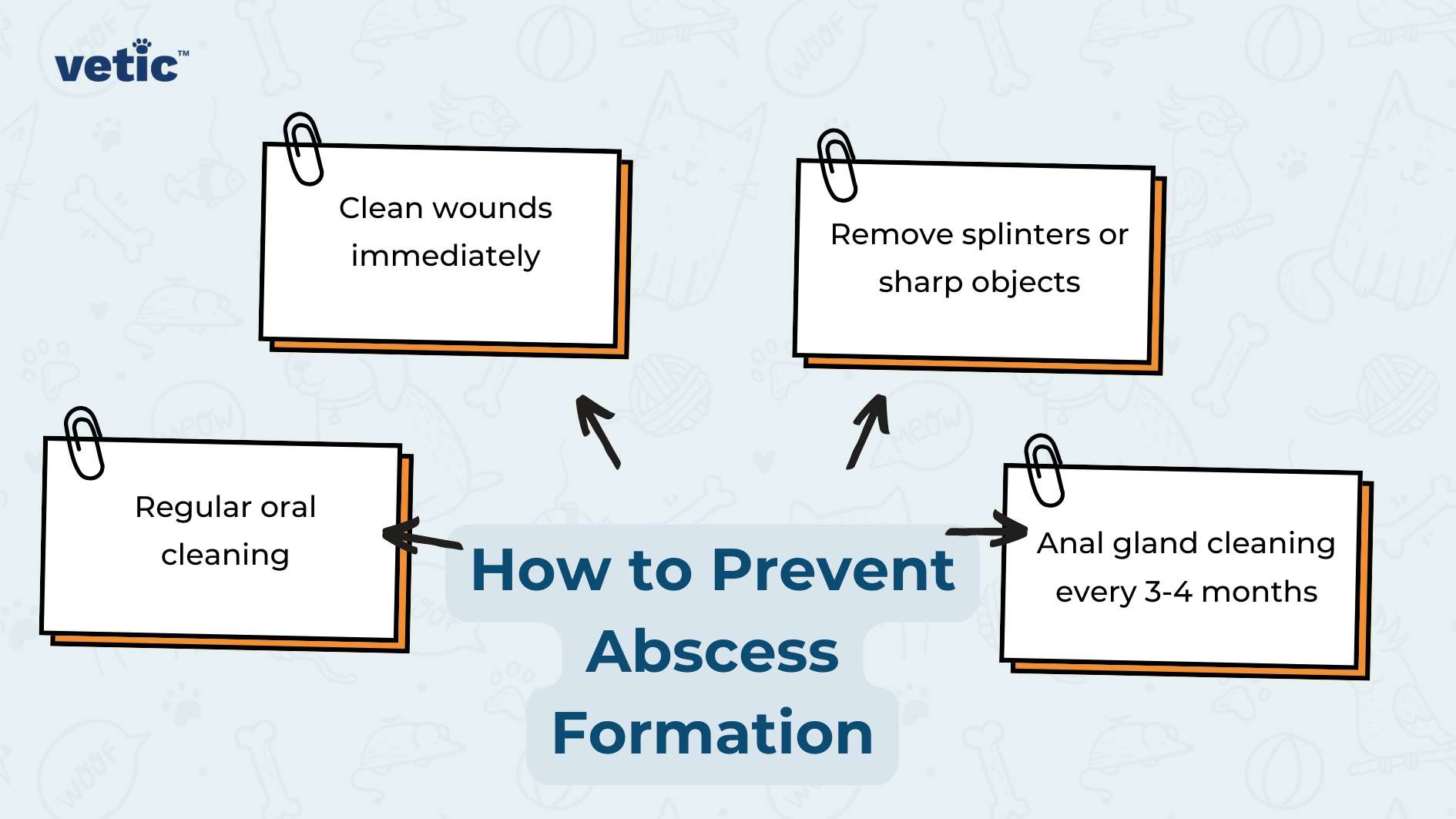
- Begin with regular oral cleaning to prevent tooth root abscesses.
- If there’s a bite wound, immediately clean it under plain running water for 15 minutes and head to the nearest pet emergency clinic.
- If it is a puncture caused by wood or metal, remove the object completely and wash the wound with plain running water. Take your dog to the hospital.
- Get your dog’s anal glands cleaned and checked up at least once in 3-4 months to prevent anal gland abscesses.
10 FAQs on abscesses in dogs:
1. What is an abscess in dogs?
An abscess is a painful pus-filled pocket, usually caused by infections, dog bites, or injuries like splinters.
2. How can I tell if my dog has an abscess?
Look for swelling, warmth, and pain at the site. Your dog may avoid touch or feel uncomfortable.
3. Are abscesses in dogs dangerous?
Yes, untreated abscesses can lead to severe infections, especially if they rupture. Immediate veterinary care is crucial.
4. What causes abscesses in dogs?
Abscesses are usually caused by dog bites, injuries, anal gland impaction, or dental infections introducing bacteria under the skin.
5. Can abscesses heal on their own?
No, most abscesses require veterinary treatment to drain the pus, prevent infection, and speed up healing.
6. How do vets treat abscesses?
Vets drain the abscess, prescribe antibiotics to fight infection, and often give painkillers to manage discomfort.
7. Can I treat my dog’s abscess at home?
No, abscesses should only be treated by a vet to prevent further infection and ensure proper drainage and healing.
8. How long does it take for an abscess to heal?
Abscesses typically heal in around two weeks with proper treatment, but some may take longer depending on severity.
9. Can abscesses reoccur in dogs?
Yes, abscesses can reoccur if the underlying cause, such as anal gland issues or dental infections, isn’t properly addressed.
10. How can I prevent abscesses in my dog?
Regular dental cleanings, wound care, and anal gland maintenance can help prevent abscesses from forming in the future.
